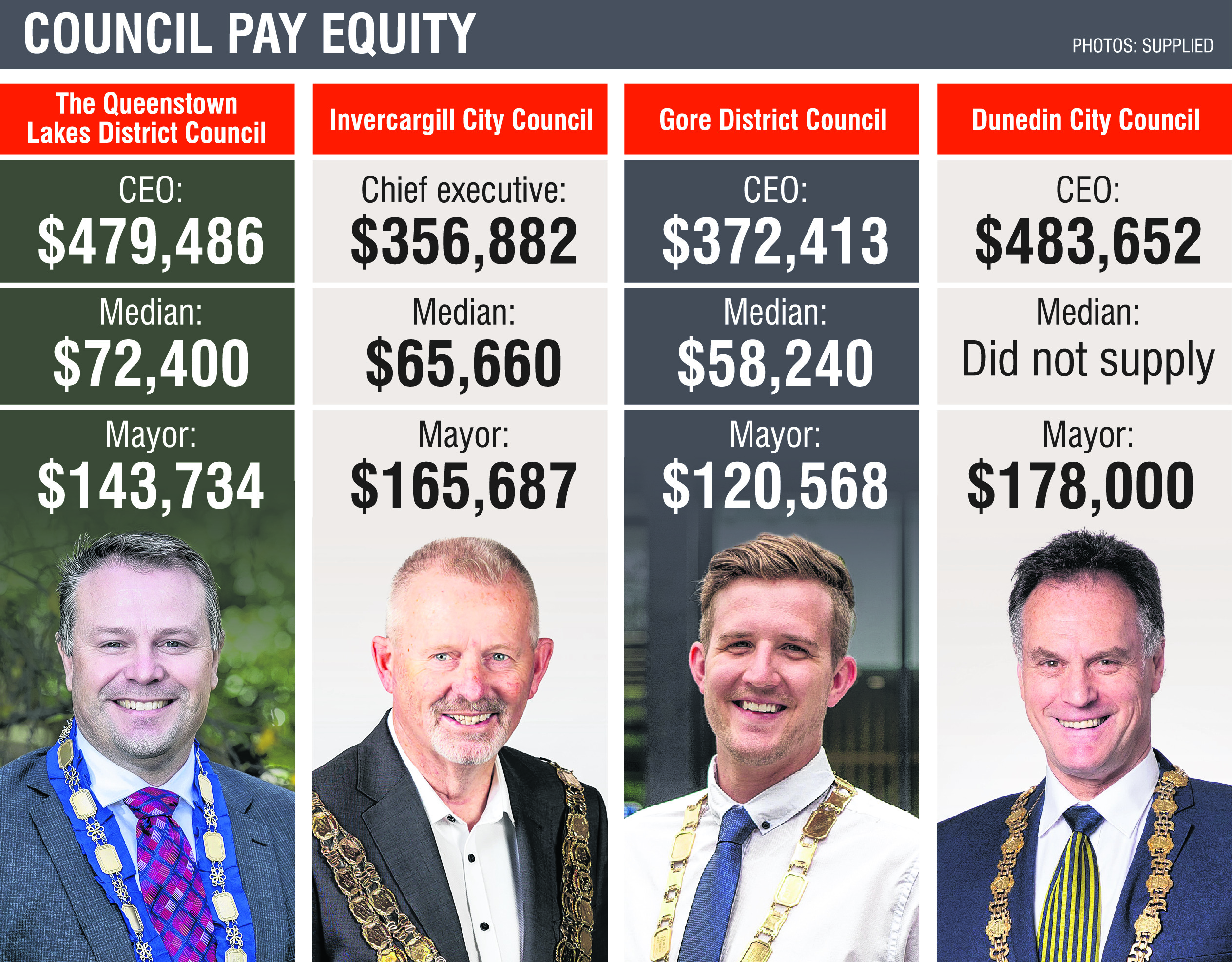
As local body elections close in, councils across the board paid their chief executives up to seven times more than those working in frontline jobs.
Pay equity expert Anna Ross, said this was happening because over time, those in the top jobs have become overvalued, and those doing the day to day, undervalued.
The Queenstown Lakes District Council employed 528 full-time equivalent staff and their chief executive Mike Theelen’s salary increased last year to $479,486.
QLDC Mayor Glyn Lewers earned $143,734 per annum, while the median pay at council was $72,400, less than a sixth of its chief executive.
"All work should be paid fairly for the level of skill, rather than the tradition, status, assumptions, power imbalance or bias," Ms Ross said.
"In the pay equity settlements we have seen in Aotearoa, to date, we have often seen the gaps in pay between frontline staff and supervisors/managers close — simply because the work of leadership was valued well whereas frontline workers were undervalued and underpaid.
"It may well be the case that many of the workers at QLDC are undervalued."
Departments among the council were: assurance, finance and risk, community services, corporate services, planning and development, property and infrastructure as well as strategy and policy.
A spokeperson from QLDC said they were proud of how they paid their employees.
"QLDC is proud to be paying the living wage for its employees, not just the minimum wage. This is an important commitment for the organisation.
"QLDC wants to be seen as a good employer and employer of choice — allowing us to attract the top talent available in the workforce."
Down south in Gore it gets slightly messy, with three chief executives in the space of one year accumulating a cost of $771,588.
Former chief executive Steven Parry earned $372,413 in salary, $293,415 in severance pay, as well as $81,549 and a car in his departure.
He was temporarily replaced by Lornae Straith who was paid $1500 on top of her general manager salary and Deborah Lascelles who finished out the year with $22,711. Mayor Ben Bell is paid $120,568 per annum.
There were 14 employees receiving salaries higher than $100,000, two over $200,000 and the median salary of its employees was just $58,240.
The median salary for Invercargill City Council employees in the 2023-24 financial year was $65,660.
Its chief executive Michael Day, was paid $356,882 and after this year’s local government elections, the mayoral salary will increase by $5000 to $165,687.
A pay rise of 3.7% takes Dunedin Mayor Jules Radich’s annual remuneration to over $178,000, meanwhile chief executive Sandy Graham earned $483,652.
The DCC would not provide the median pay for its staff.
Ms Ross said said many countries had gender neutral transparent job evaluation schemes with workers as a standard part of how jobs were remunerated and valued, with roles frequently reassessed to ensure accuracy.
"I have just been over in Iceland supporting their work on upgrading their job evaluation tool, who do this for every role in municipalities — the equivalent to local government — and the results are transparent."
Ms Ross said she could not comment whether council pay rates were or were not fitting, but suggested each should be looking at transparently for their employees and public, due to the nature of local government.
For example, QLDC Rates rose by an average of 13.5% for 2025-26.
"If they [councils] were serious about pay equity, they probably would evaluate."
She said there are plenty of standard job evaluation tools which could be used.
"Market data for CEO’s is extremely inflated, something not justified when simply measured against the level of skill, responsibility and effort required."












